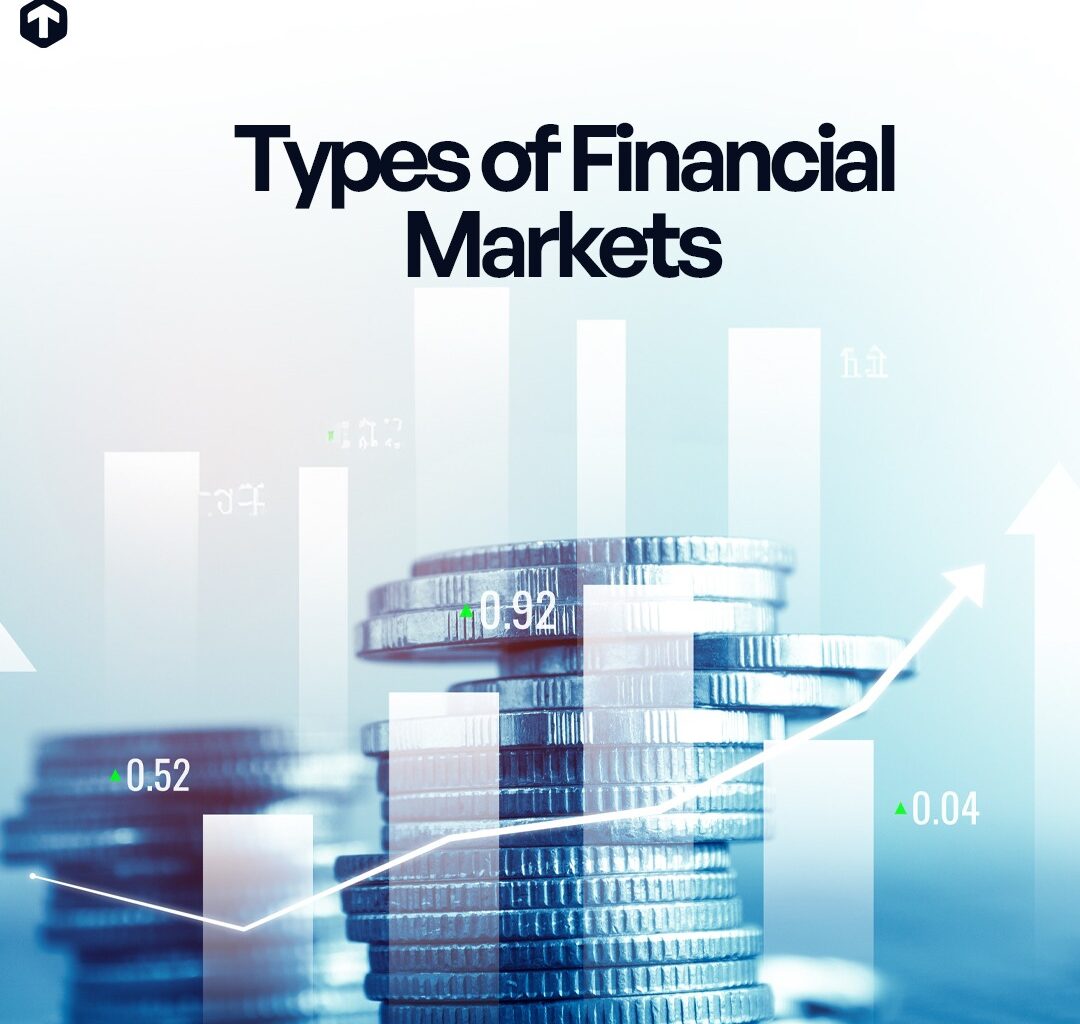When it comes to investing and managing your money, understanding the various financial markets is key. From the money market to the capital market, foreign exchange market, and derivatives market, each platform offers unique opportunities and risks.
In this blog, I’ll walk you through the different types of financial markets, breaking them down into simple, easy-to-understand segments so you can make informed investment decisions.
What are Financial Markets?
A financial market is a platform where buyers and sellers trade financial assets, such as stocks, bonds, commodities, currencies, and derivatives. These markets provide liquidity, price discovery, risk management, and capital allocation, making them essential for economic growth and development.
Types of Financial Markets
1. Money Market
The money market is a good place to start. It’s where short-term borrowing and lending occur, usually for a period of less than a year. It provides liquidity and facilitates cash management for individuals, businesses, and governments. Think of it as a place where financial institutions and governments go to manage their short-term cash needs.
Instruments traded in the money market include:
1. Commercial Paper (CP): Short-term debt issued by companies to raise funds.
2. Treasury Bills (T-Bills): Short-term government securities with maturities of up to a year.
3. Certificates of Deposit (CDs): Time deposits offered by banks with fixed interest rates and maturities.
4. Repurchase Agreements (Repos): Short-term collateralized loans, often used by banks and other financial institutions.
5. Federal Funds: Overnight loans between banks to meet reserve requirements.
6. Bankers’ Acceptances: Short-term credit instruments used in international trade.
7. Money Market Funds: Investment vehicles pooling funds to invest in low-risk, short-term debt securities.
2. Capital Market
A capital market is a financial market where long-term securities, such as stocks, bonds, and debentures, are bought and sold. It provides a platform for companies to raise capital by issuing shares or bonds, and for investors to buy and sell securities.
Stocks may be traded on listed exchanges, such as the New York Stock Exchange (NYSE), Nasdaq, or the over-the-counter (OTC) market.
3. Foreign Exchange Market (Forex)
The foreign exchange market, or Forex, is the world’s largest financial market, where currencies are traded. It’s open 24 hours a day, five days a week, and offers a way for you to speculate on the value of different currencies.
Components of the Forex Market
The Forex (Foreign Exchange) market consists of components that facilitates the trading of currencies, enabling individuals, businesses, and institutions to exchange currencies for various purposes. Here are some components:
1. Major Currencies: The most widely traded currencies, such as US Dollar (USD), Euro (EUR), Japanese Yen (JPY), British Pound (GBP), etc.
2. Currency Pairs: Combinations of two currencies traded against each other, such as EUR/USD (Euro vs. US Dollar), USD/JPY (US Dollar vs. Japanese Yen), GBP/USD (British Pound vs. US Dollar)
3. Market Participants which include, Banks – Commercial and investment banks, central banks, Institutional Investors – Pension funds, hedge funds, mutual funds, Individual Traders – Retail traders, speculators
4. Derivatives Market
A derivative is a contract between two or more parties whose value is based on an agreed-upon underlying financial asset (like a security) or set of assets (like an index).
Rather than trading stocks directly, a derivatives market trades in futures and options contracts and other advanced financial products that derive their value from underlying instruments like bonds, commodities, currencies, interest rates, market indexes, and stocks.
FAQs
What is the Difference Between the Money Market and the Capital Market?
The money market deals with short-term borrowing and lending, typically for periods of less than a year. It includes instruments like Treasury bills, commercial paper, and certificates of deposit. The capital market, on the other hand, is for long-term investments and involves the buying and selling of stocks and bonds.
How can I Start Investing in the Stock Market?
To start investing in the stock market, you need to open a brokerage account. Research and choose stocks based on your financial goals and risk tolerance. It’s advisable to start with a diversified portfolio and gradually increase your investment as you gain more knowledge and experience.
What are the Risks Involved in Forex trading?
Forex trading involves significant risks due to market volatility, leverage, and geopolitical events. It’s essential to have a good understanding of market dynamics, use risk management strategies, and not invest more than you can afford to lose.
How can I Diversify my Investment Portfolio?
Diversifying your investment portfolio involves spreading your investments across different asset classes, such as stocks, bonds, commodities, and real estate. This strategy helps to reduce risk and improve potential returns by not putting all your eggs in one basket. Consider your risk tolerance and investment goals when diversifying your portfolio

Read Also: How to Set Financial Goals
Conclusion
Understanding the various financial markets is crucial for making informed investment decisions. Each market—be it stocks, bonds, money, forex, derivatives, commodities, or cryptocurrencies—offers unique opportunities and risks. By diversifying your investments across these markets, you can balance potential returns with acceptable levels of risk, enhancing your financial security and growth.




